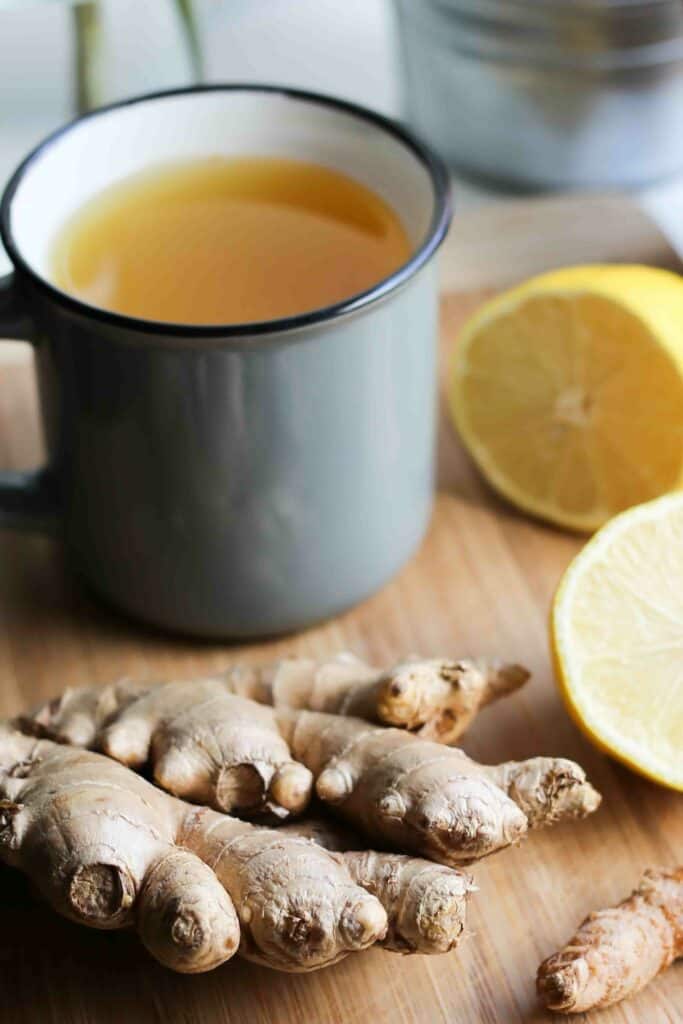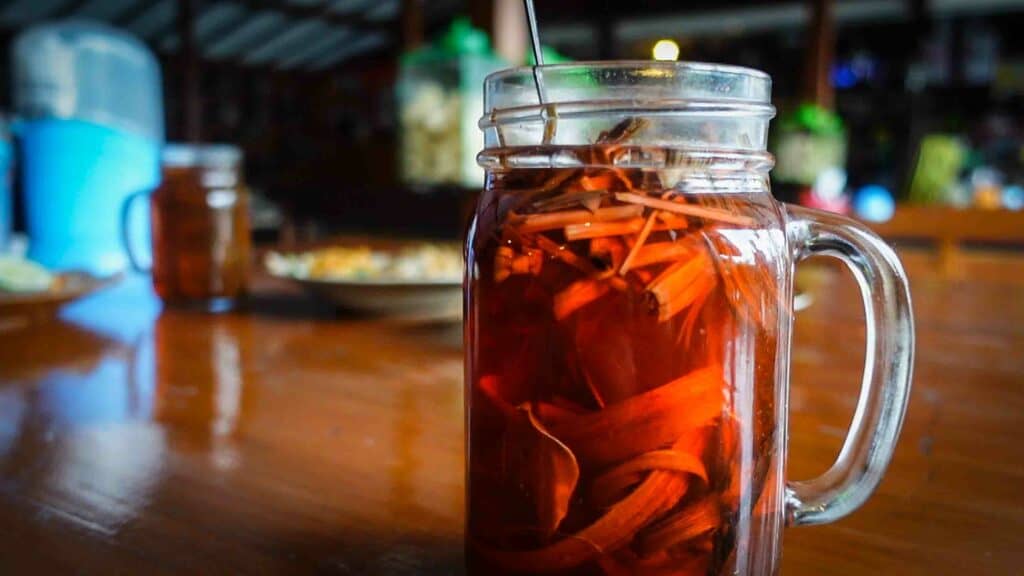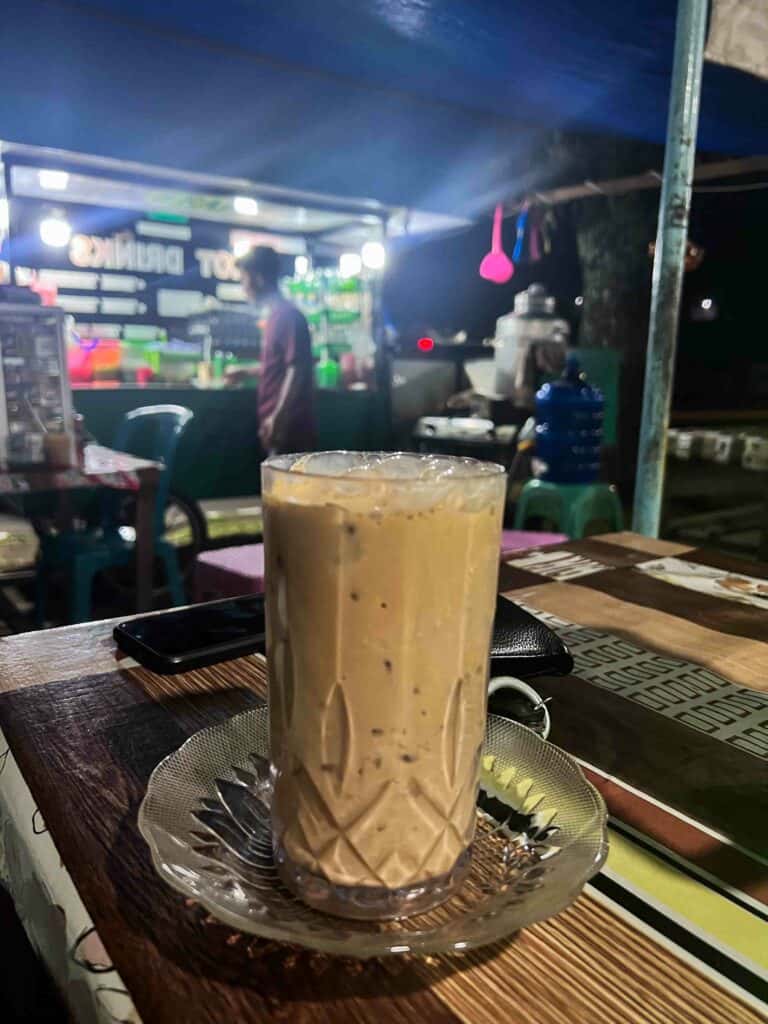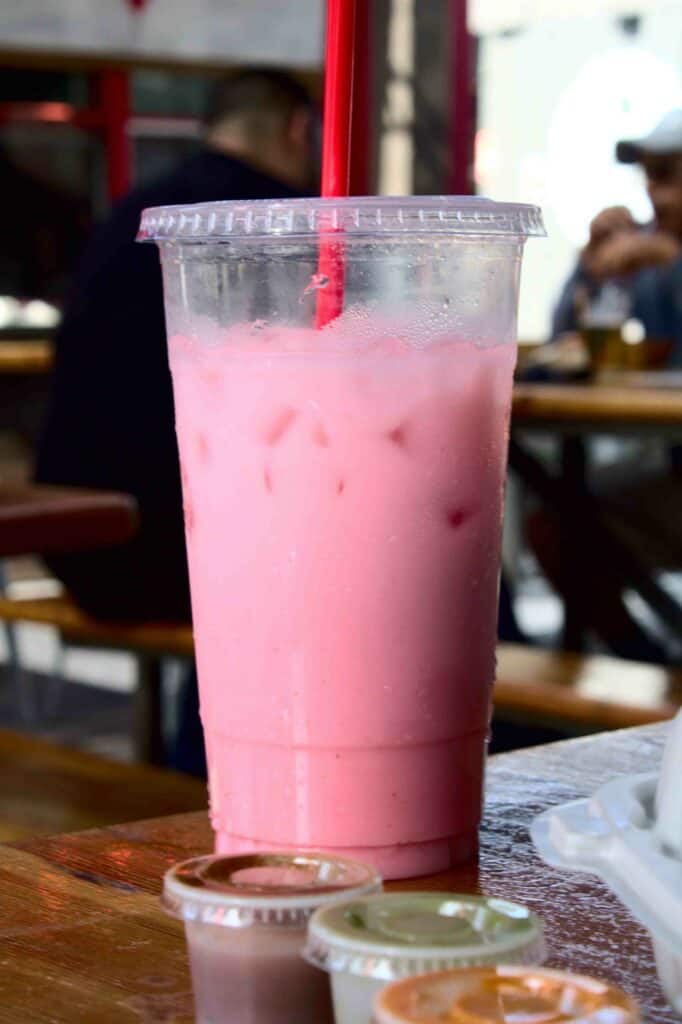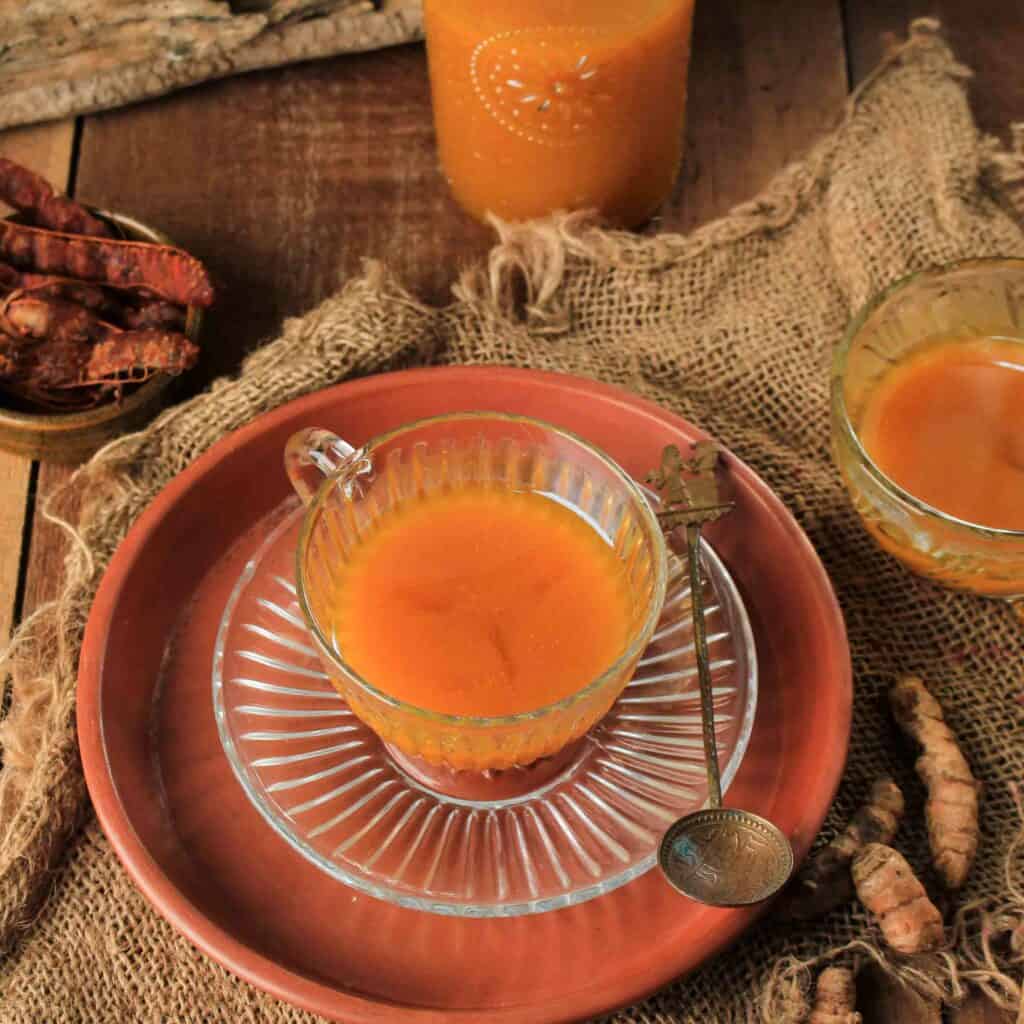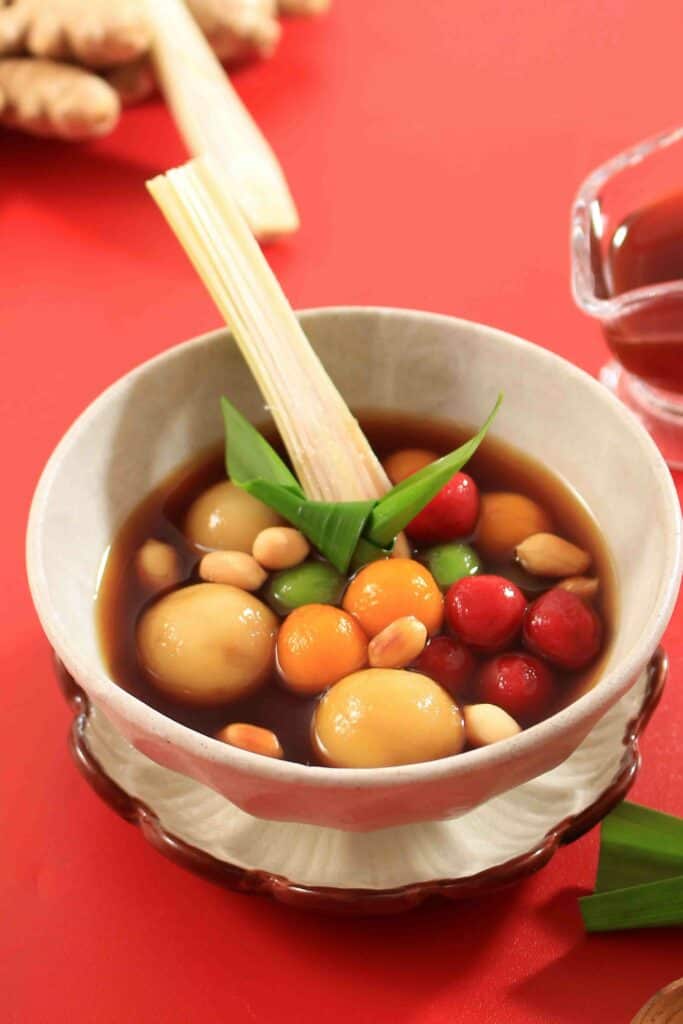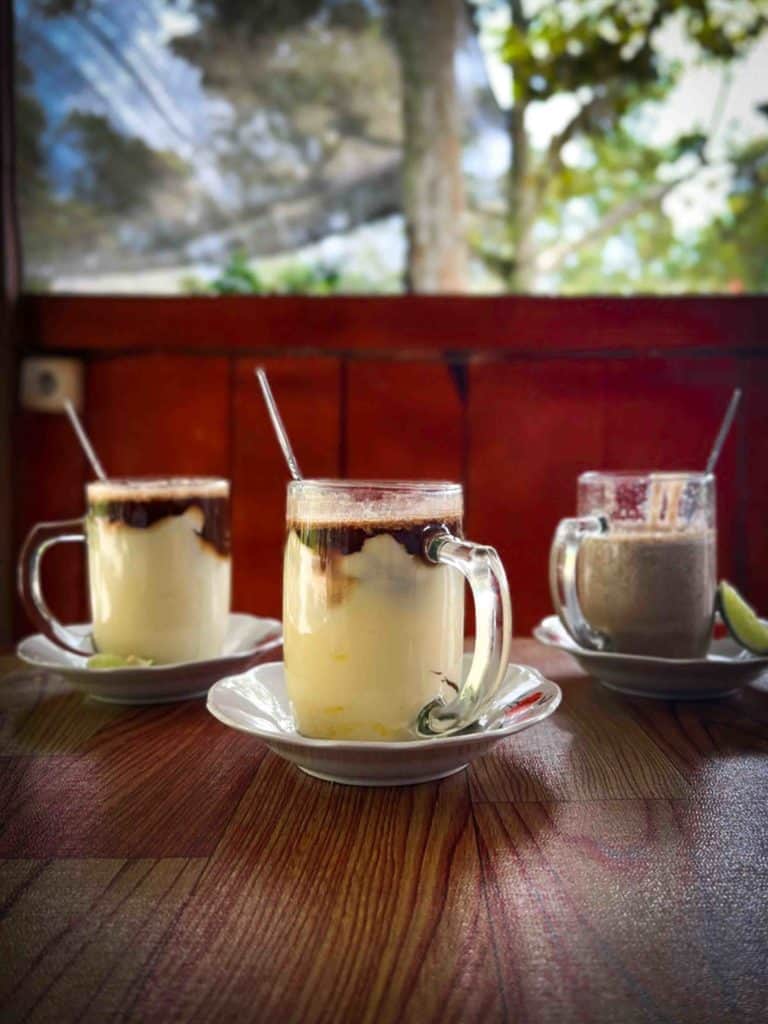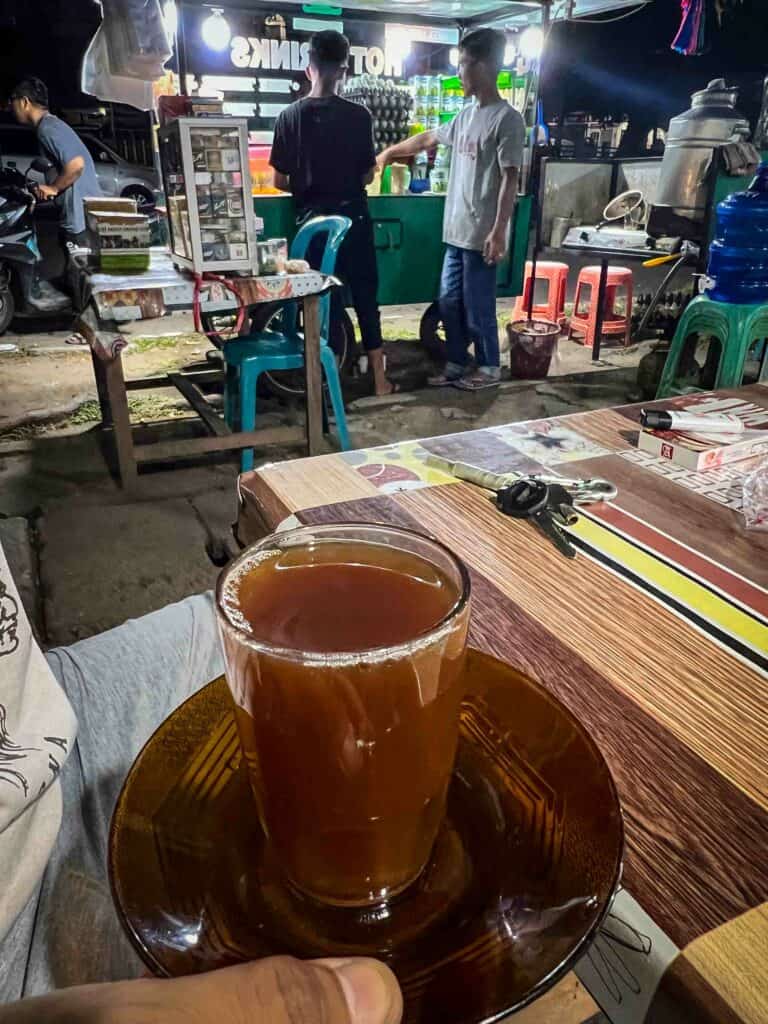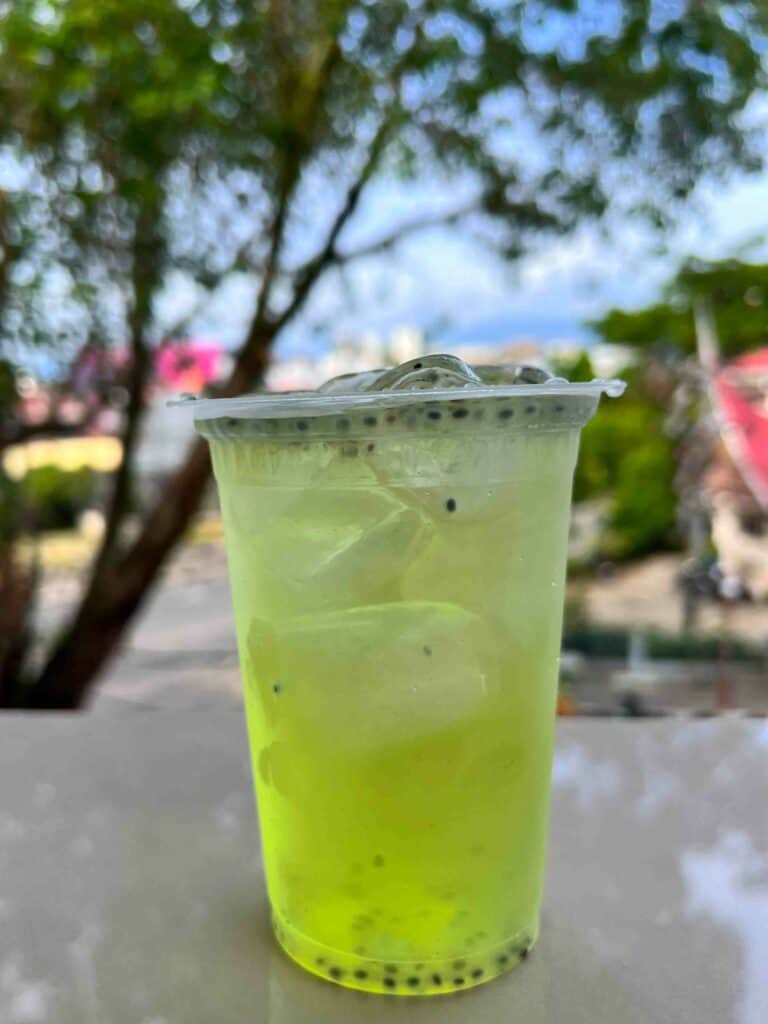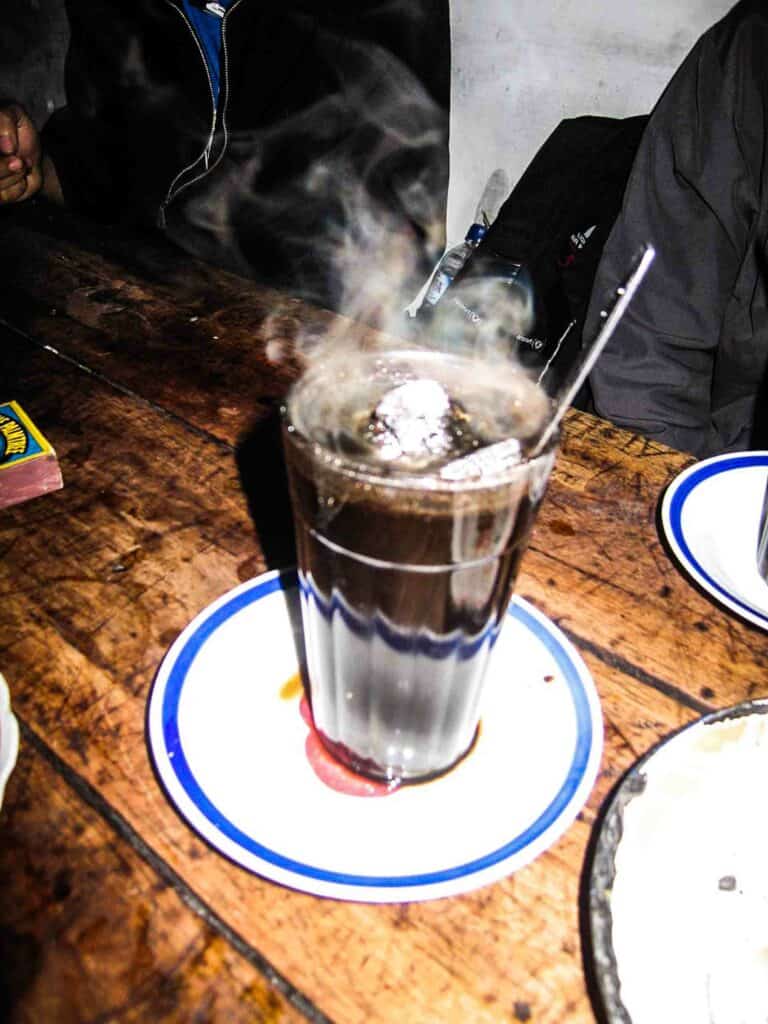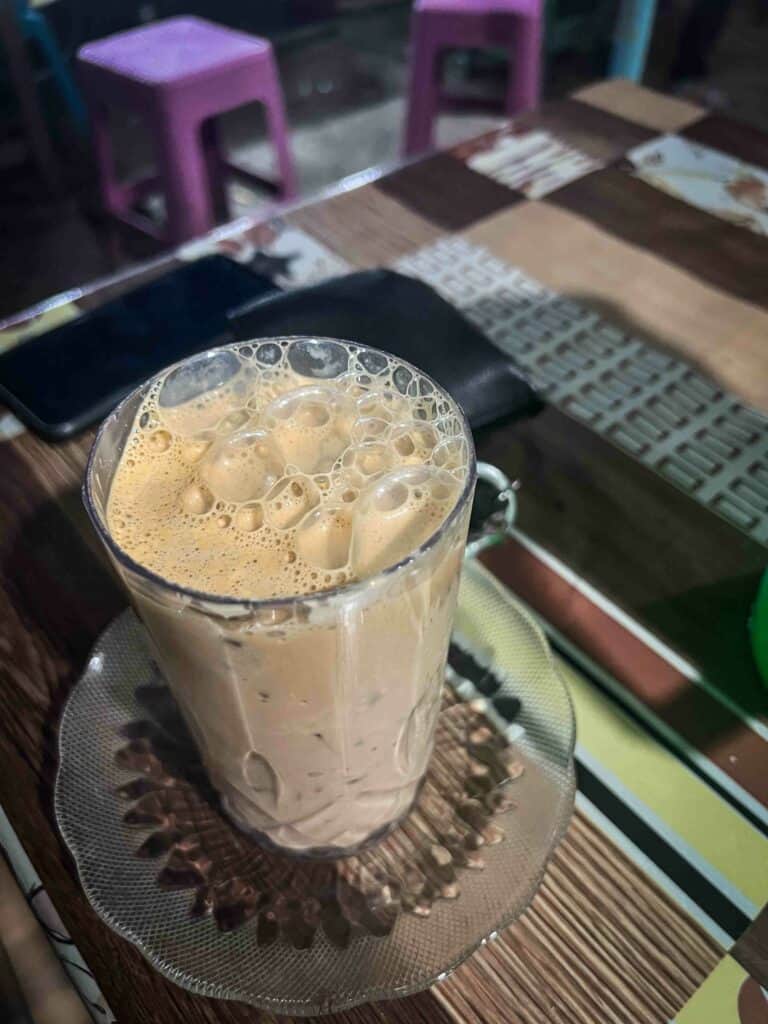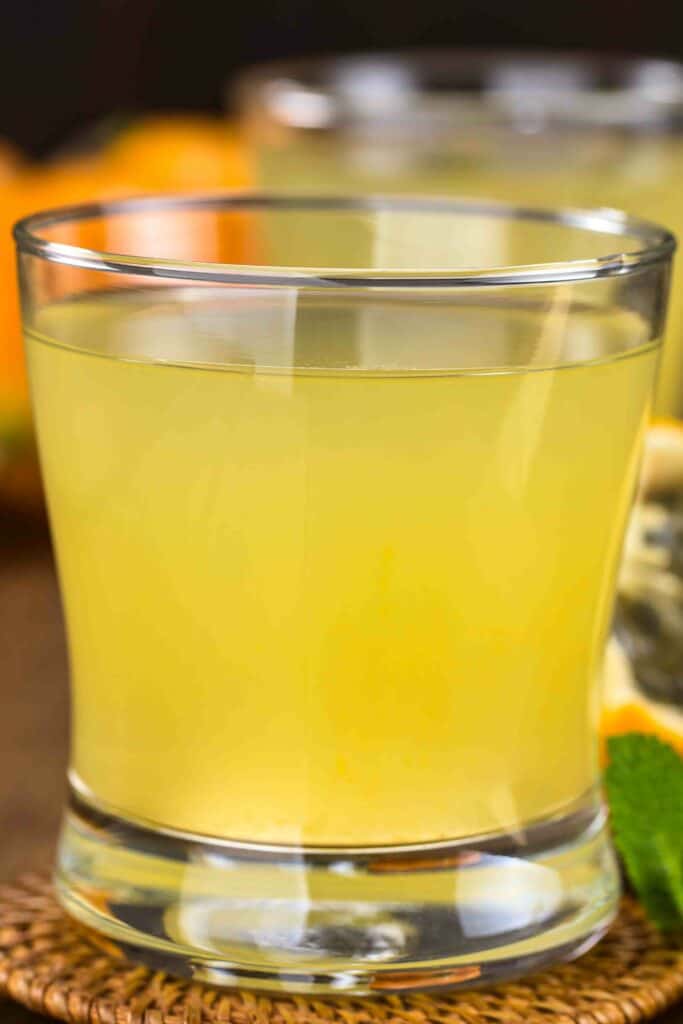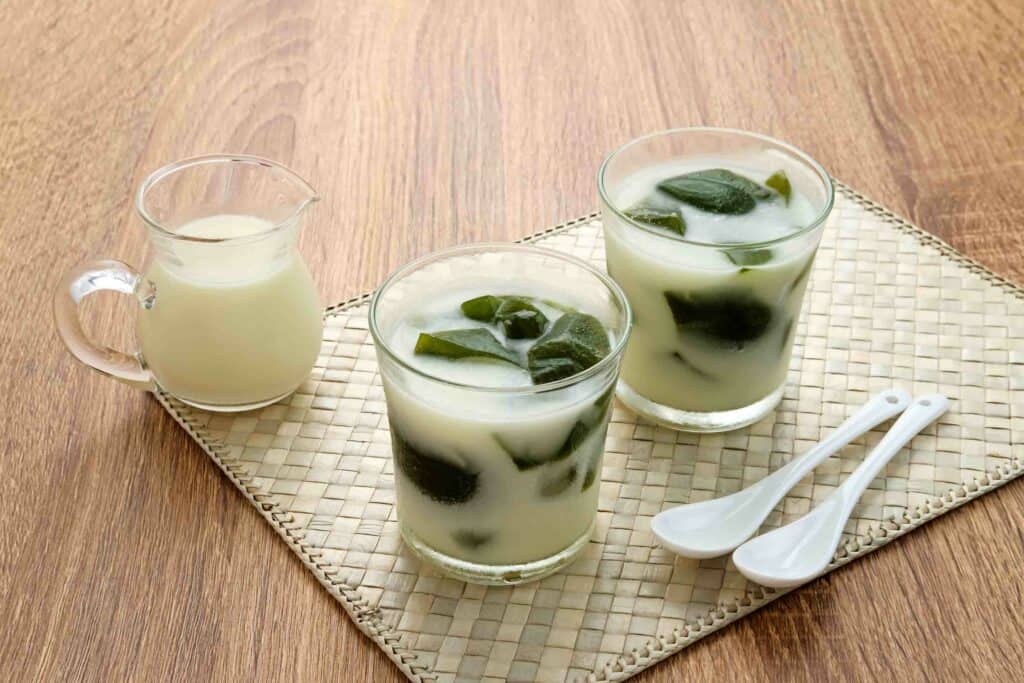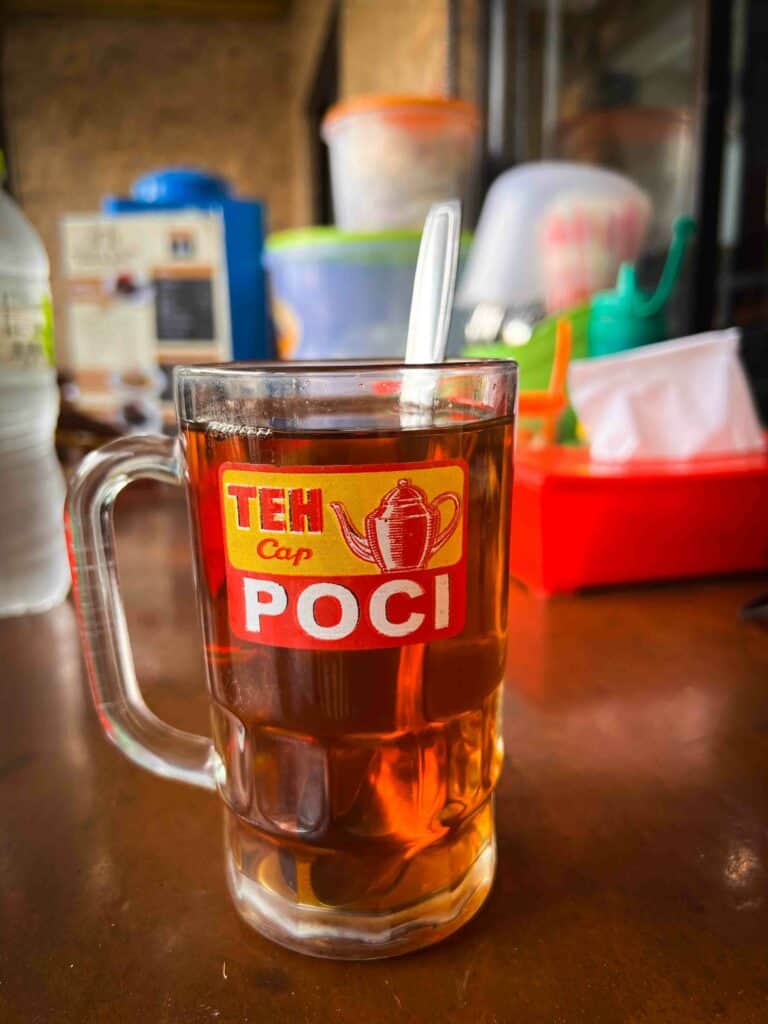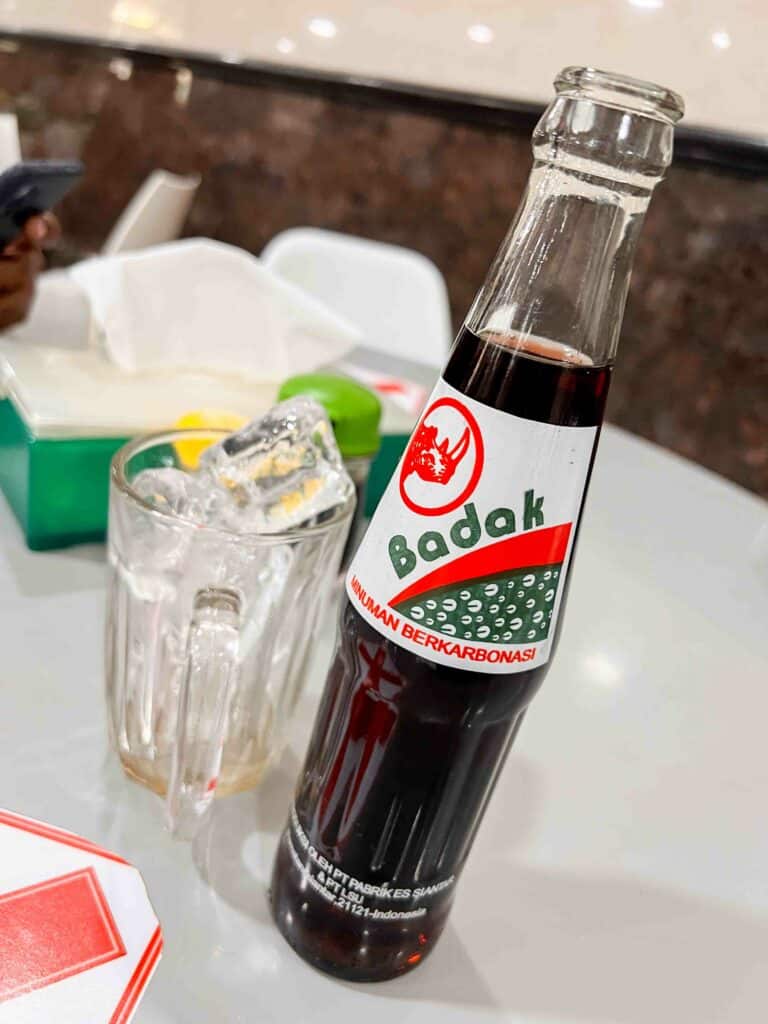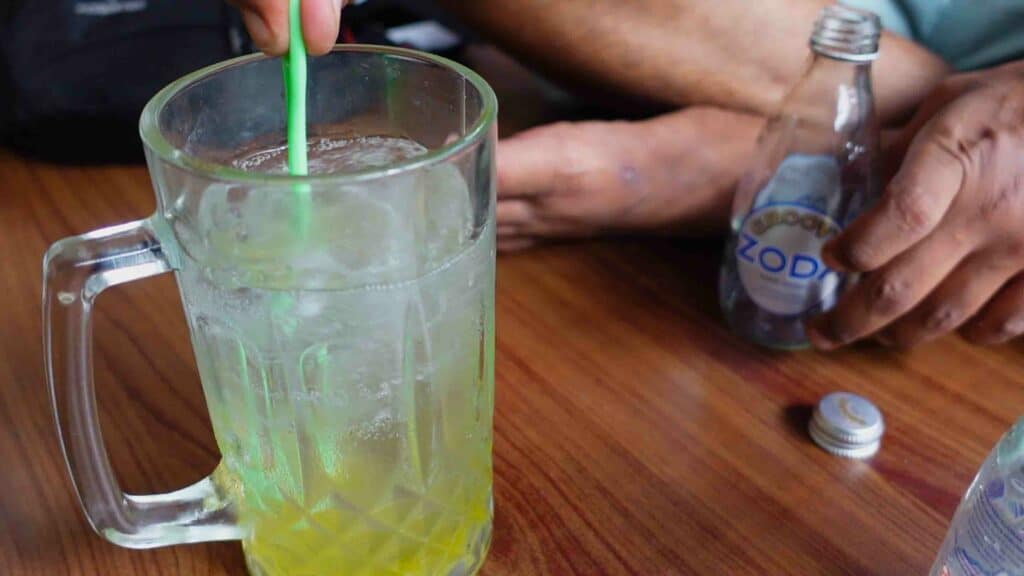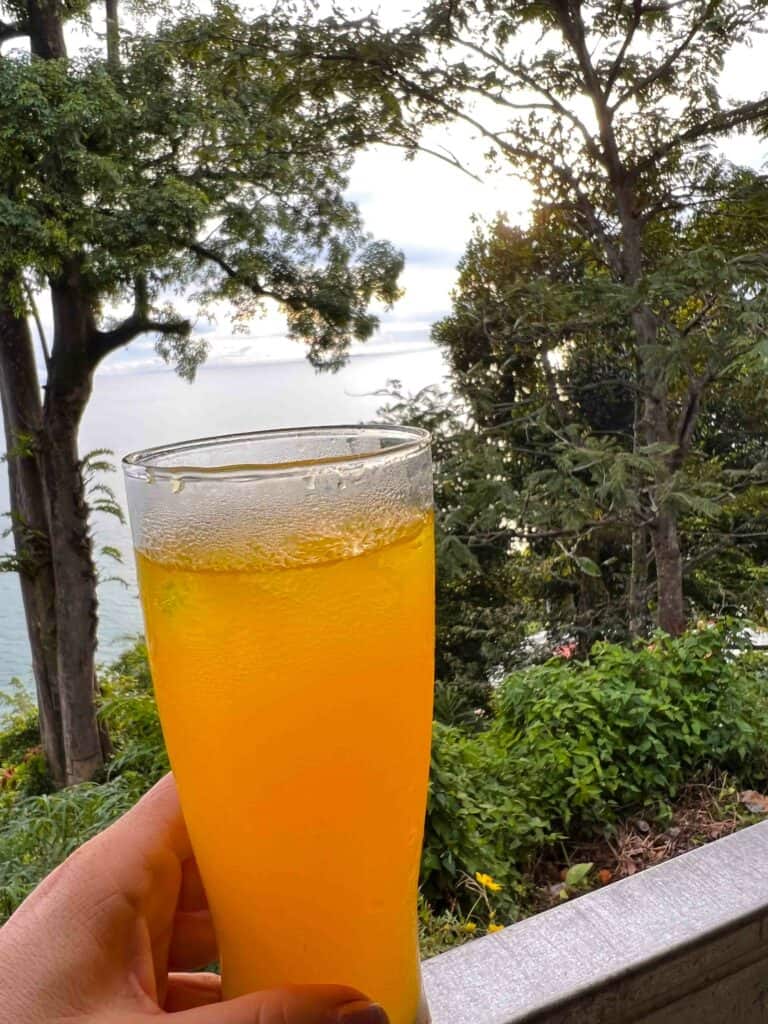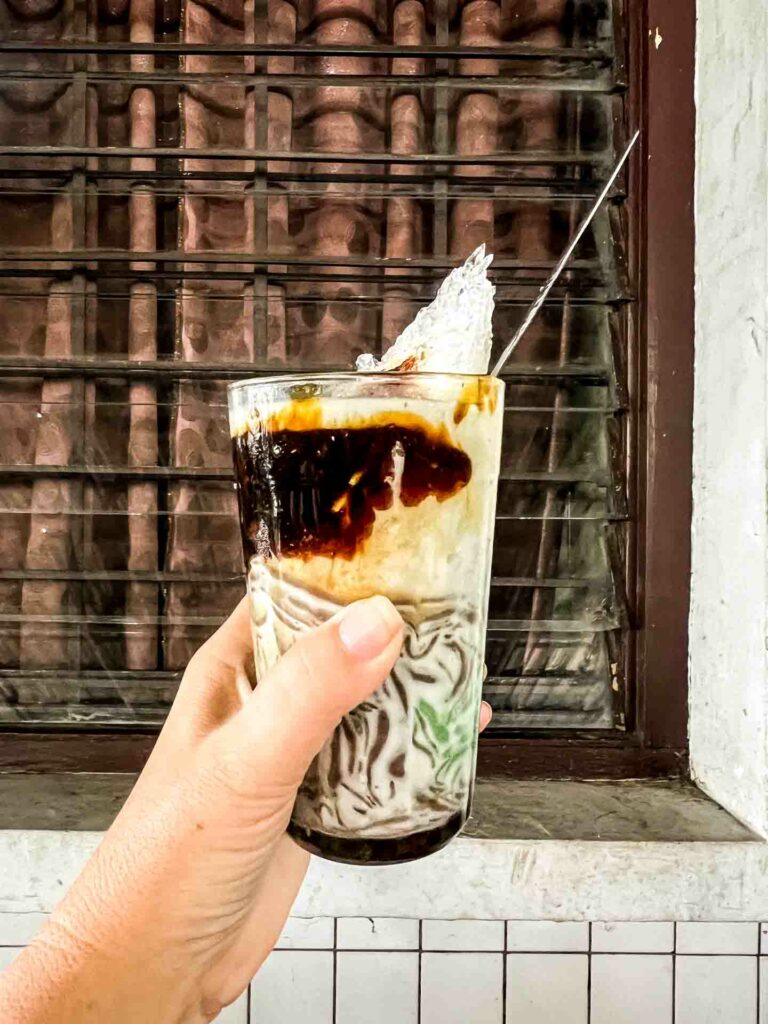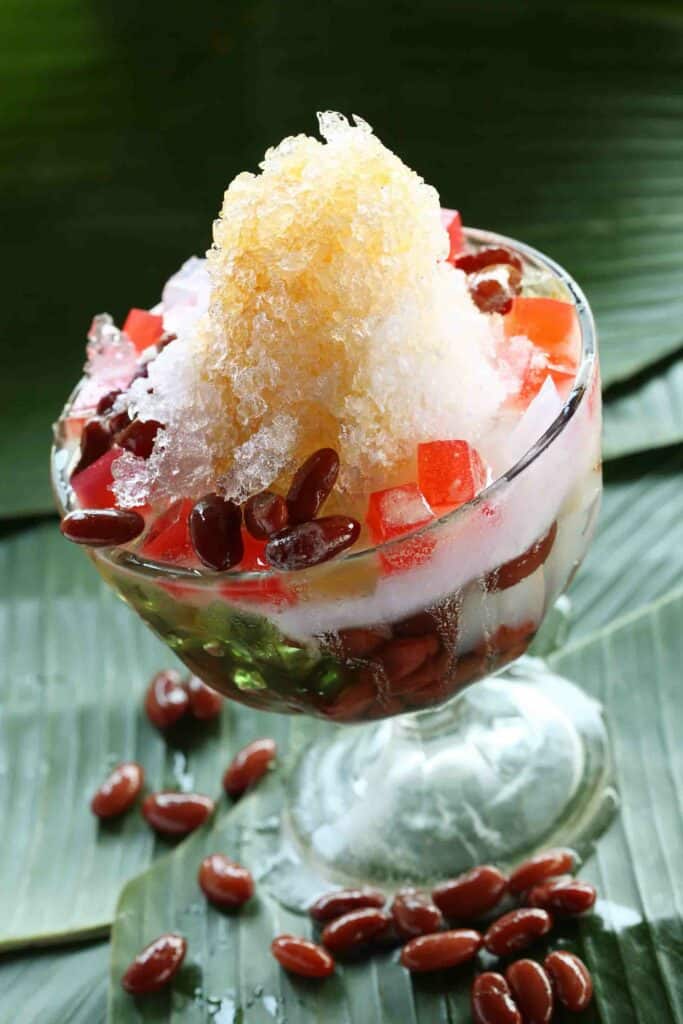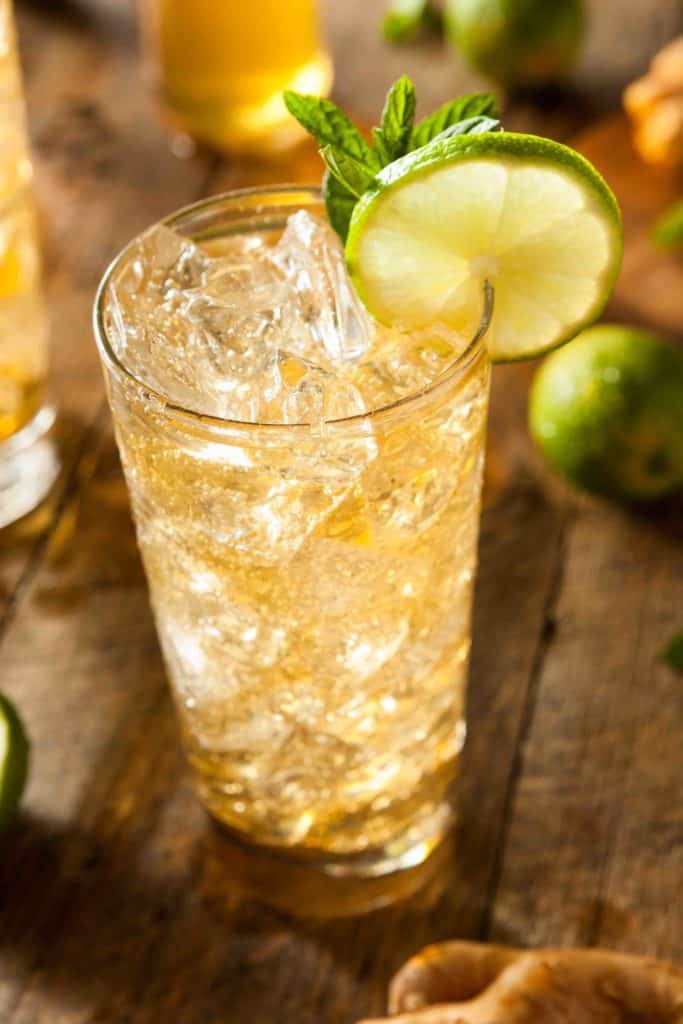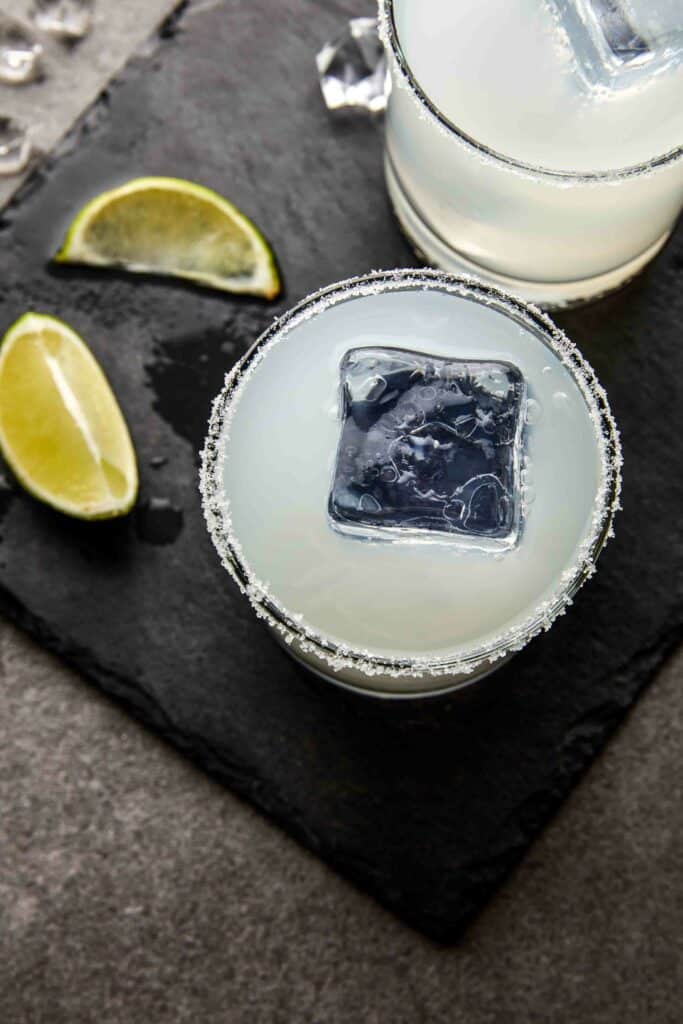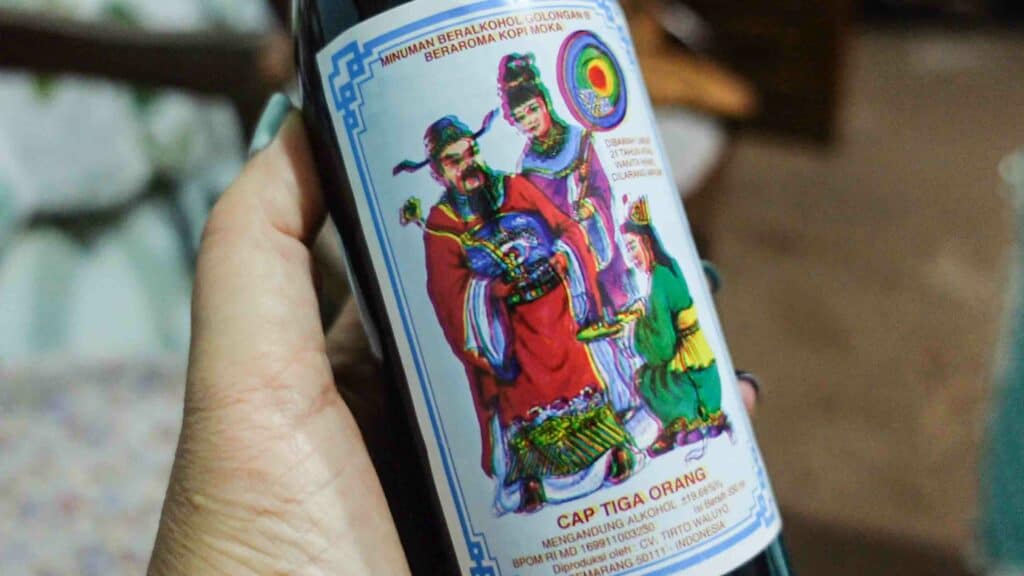A country with fantastic beaches and friendly people, you’ll also love these delicious Indonesian drinks.
If you’re going to be in a hot and humid country, it’s best to prepare yourself for the ultimate list of thirst quenching drinks.
The climate of Indonesia, for the most part, falls under the tropical category, with a few exceptions in the lower and higher lying areas.
This means that the weather conditions are largely hot, humid, and wet.
And cold drinks reign.
Yes you can find hot drinks here but more often than not people want icy cold versions of their favorite Indonesian drinks.
The archipelago lies on either side of the equator meaning that temperatures are relatively constant throughout the year.
However, even though the temperatures are constant, it is going to be hot on any given day.
Instead of complaining about the heat, arm yourself with this bucket list of thirst quenching drinks.
Traditional Indonesian Drinks
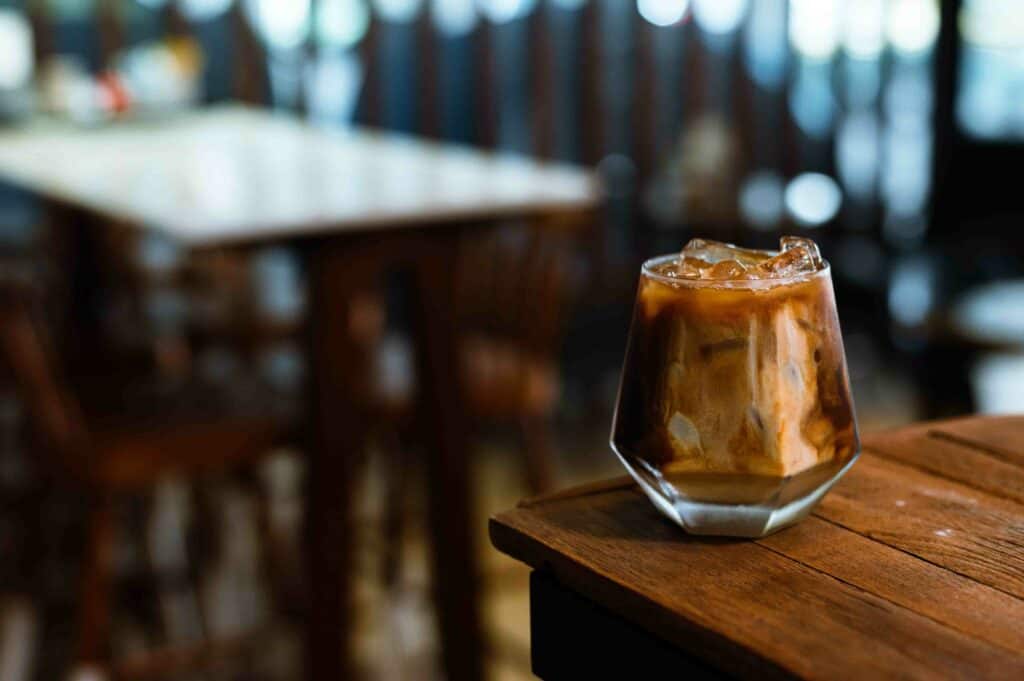
Non-Alcoholic Drinks in Indonesia
One important thing to note is that Indonesia is a Muslim majority country, and a large part of the population doesn’t consume alcohol.
But that doesn’t mean there isn’t a great culinary scene with fantastic traditional drinks in Indonesia as well as some incredible mocktails and fresh juice.
Kids may not be in clubs drinking all night, but Indonesia’s cafe scene goes late into the early morning where friends and loved ones meet up for delicious drinks and hours of talking and laughter.
The first seven weeks I traveled in Indonesia I didn’t have a single drop of alcohol and I didn’t notice it at all. I was still going out at night but without alcohol.
1. Kopi Luwak
Kopi luwak is the world-famous civet coffee that originates from Indonesia. Not only is this caffeinated Indonesian drink a novelty, but it is also the world’s most expensive cup of coffee.
I hesitated to mention this Indonesian drink but decided to mention it first as something NOT to drink in Indonesia.
You can expect to pay between $35 and $80 for a single cup in Bali.
Produced on the Indonesian islands of Sumatra, Java, Bali, Sulawesi, and East Timor, the coffee cherries are consumed by Asian palm civet.
The civets consume and digest the flesh of the cherries and then defecate out the remaining bean with other fecal matter. This is then collected, cleaned, and roasted.
There has been a lot of backlash around kopi luwak, however, as the new, modern methods of farming it has received much criticism from animal cruelty organizations.
The older, more primitive methods involved collecting the defecated beans in the wild, but this was both labor-intensive and inconsistent.
Today there are a number of reasons NOT to drink this, including the inhumane treatment of animals and more often than not you’re not getting the real deal.
Indonesian coffee is good enough as it is, save your money and don’t drink kopi luwak.
2. Jus Alpukat
Jus alpukat is directly translated to “avocado juice”. Although it has a much thicker, milkshake-like consistency thanks to the creamy avocados.
It is also one of the favorite Indonesian drinks that is enjoyed as a dessert and can be served with or without coffee in it.
Served in a tall glass, jus alpukat is a blended mix of avocado, fresh milk, and ice.
It usually has chocolate drizzled inside the glass and is topped off with chocolate sprinkles.
You can find the Indonesian dessert drink at most restaurants and there are a few variations that exclude sugar and dairy.
3. Temulawak
Temulawak, also known as Java ginger/Java turmeric, is used to produce one the of the medicinal Indonesian drinks.
It is best used fresh, where it is sliced and mashed and then boiled with tamarind, palm sugar, and water to produce the medicinal drink.
Temulawak drinks are commonly used to improve appetite, especially in children. But it can also be used for a number of other health benefits.
These include nausea, the treatment of common colds, and dizziness.
An instant version of the Indonesian drink is also available, called Sari Temulawak 85, which is a more convenient way to enjoy the drink.
4. Wedang Uwuh
Wedang uwuh is one of the Indonesian drinks that can be enjoyed hot or cold. It’s from the city of Yogyakarta on the island of Java.
Directly translated as “trash drink”, it is prepared using a number of spices such as cinnamon, cloves, cardamom, and star anise.
Bay leaves, lime leaves, ginger, lemongrass, and honey/palm sugar are brewed in water to produce the medicinal Indonesian drink.
Wedang uwuh has a number of health benefits such as aiding in lowering cholesterol, prevention of deep vein thrombosis.
It also has antioxidant and anti-inflammatory benefits too.
The delicious, highly beneficial drink can be found at street vendors and markets throughout the country and won’t cost you more than $0.20.
5. Bajigur
Bajigur is one of the favorite hot Indonesian drinks that originated from the Sudanese people of West Java.
Often sold by street vendors and roadside cafes, it is a hot beverage prepared by combining coffee, pandan leaves, coconut milk, palm sugar, and ginger.
It is a soothing drink that’s perfect for when the weather is a bit cooler. It even has some medical properties.
The ginger element in the drink can help to boost the immune system when you’re feeling a bit sick. It is also packed with antioxidants for skin benefits and in reducing stress.
6. Soda Gembira
Soda gembira (happy soda) is one of the traditional Indonesian drinks that is served during the Ramadan period.
It can also be found at small warungs alongside the popular bakso dish and is even used at wedding receptions.
Soda gembira is a combination of sparkling water, condensed milk, coco pandan syrup, and ice.
It is also considered one of the favorite drinks in Indonesia for children.
7. Jamu
Jamu is a traditional Indonesian drink composed of fresh turmeric, lemon, ginger, and water that is sweetened slightly with honey.
All these ingredients have amazing health benefits, making jamu a fantastic medicinal drink.
It has immune-boosting qualities as well as antioxidant benefits to improve skin health and maintain stress levels.
The fresh ginger and turmeric are sliced, blended, then simmered in a pot to extract all the goodness from them.
Some lemon juice and honey are added at the end and the mix is finally strained to remove the impurities.
The jamu is chilled and can be enjoyed as a refreshing juice at any time of the day or night.
8. Wedang Ronde
Wedang ronde is an Indonesian drink that originates from central Java. This dessert drink is made up of glutinous rice balls floating in a sweet ginger broth.
Wedang ronde is a combination of Indonesian and Dutch words – wedang meaning “beverage” and ronde meaning “round”.
The glutinous rice balls are filled with palm sugar and peanuts. And the ginger broth is made from combining fresh ginger, pandan leaves, and palm sugar in water.
Wedang ronde is the perfect Indonesian drink for cooler weather, but the ginger-rich broth also has its usual health benefits.
9. Teh Talua / Teh Telur
The talua is a West Sumatran drink that is directly translated to “egg tea”.
It uses an egg yolk from either a duck or chicken, tea, sugar, and the Indonesian citrus fruit calamondin.
The egg yolk and sugar are mixed to form a paste, tea and hot water are then added. It’s finished off with calamondin for a bit of acidity.
Some people also like to add a bit of honey for a hint of sweetness.
Teh Talua
10. Wedang Jahe
Wedang jahe (ginger drink) is one of the many drinks in Indonesia that is made using ginger.
It is a form of ginger tea, steeped with sugar, pandan leaves, and water.
Although some like to add a mix of other spices to the drink, such as lemongrass, cloves, cardamom, and black peppercorns.
The ingredients are boiled together and steeped for a few minutes, and finally strained and served.
Wedang jahe is a wonderfully warming drink with many immune-boosting qualities that is enjoyed throughout the country.
Indonesian Food
11. Sekoteng
Sekoteng is a traditional central Javanese drink that is made up of a warm ginger soup mixed with condensed milk.
The soup is then finished with pieces of torn bread, peanuts, palm fruit, and sago pearls.
This Indonesian drink is normally served in the evenings. It is sold by street vendors as a delicious warm dessert before bedtime.
12. Es Lidah Buaya
Es lidah buaya is a deliciously refreshing iced mint and aloe vera drink.
A syrup of prepared aloe vera, screw pine leaves, mint, sugar, and water is added to a cold glass. It is garnished with mint and finished with a squeeze of lime juice.
Es lidah buaya is not only a refreshing cold drink, but it’s also great for keeping hydrated in the tropical climate of Indonesia.
It is important to, when visiting Indonesia, drink a lot of water or other beverages.
This is necessary to replace fluids lost through sweating to prevent dehydration – a harsh reality in the tropics.
Indonesian Vegetarian Food
13. Bir Pletok
Bir pletok is a non-alcoholic Indonesian drink that was created by the Betawi people in Java.
The pletok beer is made using a combination of ginger, pandan leaves, boiled sappan wood, and lemongrass.
The sweet, spicy red drink has many health benefits including relieving muscle pain, facilitating digestion, and in the treatment of nausea and motion sickness.
The traditional drink is effortlessly prepared at home but is also commonly found at warungs, street vendors, and even supermarkets.
14. Kopi Joss
Kopi joss, or charcoal coffee, derives its name from the sizzling sound that is heard when a piece of hot charcoal is dropped into the Indonesian drink.
The coffee drink is normally found in the city of Yogyakarta in central Java. It is usually sold by street vendors.
The unusual coffee drink can be enjoyed either hot or cold as a red-hot piece of charcoal is dropped into it.
The charcoal is said to impart a caramel-like flavor to the coffee and also has a number of health benefits.
It can help lower cholesterol levels, improve kidney function, and reduce stomach gas emissions.
15. Bandrek
Bandrek is another one of the Indonesian drinks that originates from the Sudanese people of West Java.
It is a hot drink made by mixing ginger, cloves, cinnamon, lemongrass, and palm sugar in hot water to extract their flavor and aroma.
It is traditionally enjoyed by the native Sudanese people of West Java who live in the higher altitude region where the weather is slightly cooler.
The benefits of this warm Indonesian drink include soothing a sore throat, boosting the immune system, and warming the body.
There are quite a few variations of the drink from the spice composition to the addition of coconut milk.
Surabaya Food
16. Sarabba
Sarabba is a traditional Indonesian drink that comes from the southern region of Sulawesi Island.
It is a refreshing mix of ginger, lemongrass, egg yolk, palm sugar, coconut milk, and pepper that are simmered together to extract the flavors.
Sarabba is both sweet and savory in taste and perfect for the cooler evenings.
It is rumored that sarabba is drunk on New Year’s Eve to ensure that one has a warm, sweet, and healthy start to the new year.
17. Lahang
Lahang is a cold, sweetened drink that comes from the west of Java. It is one of the only Indonesian drinks that is made from the sap of the arenga pinnata (sugar palm).
This traditional Sudanese isotonic drink is usually sold by street vendors, who mix the sap with ice and serve it fresh.
Lahang drinks are easily absorbed in the stomach and are a great way to keep hydrated or to rehydrate.
18. Es Cincau
Es cincau is a refreshing drink made with coconut milk, grass jelly, sugar, and pandan leaves.
It is one of the most refreshing Indonesian drinks that is best enjoyed on a hot afternoon. It is perfect to rejuvenate and refresh with its sweet, earthy flavors.
19. Kopi Jahe
Kopi jahe, or ginger coffee, is just that: Black coffee that is infused with ginger – an Indonesian drink that is enjoyed throughout the country, mostly at warungs.
Aside from ginger, there is often cinnamon, and cardamom added for an additional warm, spicy kick.
20. Teh
I drink this Indonesian drink daily while here, it’s simply tea. You can have it hot or cold as es tea and with sugar to be teh manis or without teh tawar.
My go to drink is es teh tawar which is a black tea on ice. It’s cheap and so refreshing.
21. Badak Traditional Root Beer Soda
A traditional root beer soda from the 1920s, it launched when soda wasn’t so common n Indonesia.
Today you’ll still find it in Java and in Medan in Northern Sumatra they mix it with condensed soda.
22. Lemon Squash
I’m not sure why it’s called squash but it’s a homemade type of soda that can be made of many different fruit. The “squash” is a sweet fruit syrup served on ice and you add the amount of soda water you’d like.
It’s not too sweet and actually a very refreshing drink.
23. NutriSana
This is an orange drink that reminds me of Tang in North America. It’s a powdered package that you’ll find all over and restaurants will add the water and mix it for you.
I first tried this in Padang, near Bungus Bay and it brought back great memories.
24. Es Cendol / Es Dawet
Called es cendol or es dawet this is a tradtional Javanese dessert that is also a cold drink and is often served with a spoon and a straw.
It’s a mix of coconut milk and palm sugar syrup with strands of green seaweedjelly made from rice flour.
It may look similar to es campur; however, the defining difference is it also includes seaweed jelly.
If you’ve traveled around Southeast Asia it may look familiar as you’ll find it in most countries from Cambodia to Singapore. Do not miss this food in Ipoh, it’s one of the most popular with locals.
25. Es Campur
Is it a drink or a dessert?
Indonesia has so many of these drinks that can be eaten with a spoon and es campur is one of them with jellied fruits, ice and condensed syrup.
Alcoholic Drinks in Indonesia
As I mentioned above, alcohol isn’t readily available everywhere. You won’t find it on many menus and you need to look for stores that sel it or ask convenience store owners who may keep it behind the counter.
However, this doesn’t mean that alcohol isn’t available as foreign tourists are looking for it.
In places like Bali you’ll find beer alcohol in most convenience stores (although not Indomarket) though other islands and even big cities like Jakarta you have to ask around.
Often Chinese owned shops are a good place to ask where you can find it.
And don’t expect cheap beer or a wide variety of wine and spirits like you find other South East Asian countries.
While everyone has heard of Bintang, the most well-known beer or #2 Anchor beer, these four alcoholic drinks are lesser-known Indonesian drinks.
26. Arak
Arrack/arak is an alcohol that is produced by fermenting a substance called tuak – fermented sugar palm sap.
It is often referred to as the rum of Indonesia as it is also produced from sugar cane.
Arak is normally used to produce interesting Indonesian cocktails and many recipes will call for it specifically.
A few interesting cocktails include the Arrack Strap, the Smoking Jet Pilot, and the classic Batavia Arrack Highball.
It is also used in traditional ceremonies, to bring about a sense of togetherness and unity amongst the people present.
27. Sopi
Sopi is one of the oldest Indonesian drinks, with its history dating back to the 15th Century.
The drink, originating from Maluku and Flores islands in the east of Indonesia. It is made by fermenting nira (palm sap) mixed with powdered husor root.
The palm sap imparts a strong, sweet flavor. Sopi is normally consumed on special occasions, symbolizing togetherness and unity.
28. Brem
Brem is a type of rice wine that is made by fermenting glutinous black rice, giving it its red color. There is also a fermented cake version that is mostly eaten as a snack.
The brem beverage is traditionally used in rituals in Bali. And thanks to the tourism sector on the island, it has become a popular drink and souvenir.
It has a slightly sweet and sour taste, so is best enjoyed on its own.
The traditional Indonesian drink has a relatively low alcohol content ranging from 3 – 10%. It is much lower than that of arrack.
While it is produced on both Bali and Nusa Tenggara, it is most popular on the Island of the Gods.
National Dishes of Indonesia
29. Tuak
Tuak is a form of palm wine that is fermented from the flower essence of palm sugar trees.
It is traditionally served at special occasions and celebrations of the Batak people from North Sumatra.
Tuak in North Sumatra has dried fruits mixed into it which helps to make it a bit sweeter.
It is also quite common to be served a glass of this Indonesian drink when visiting a Bataknese home. Traditionally it is considered a form of welcoming someone to their home.
It is also sometimes referred to as bir panjat, which translated means “climbing beer”.
This is because of the climb that is involved in harvesting the flowers of the palm sugar trees.

